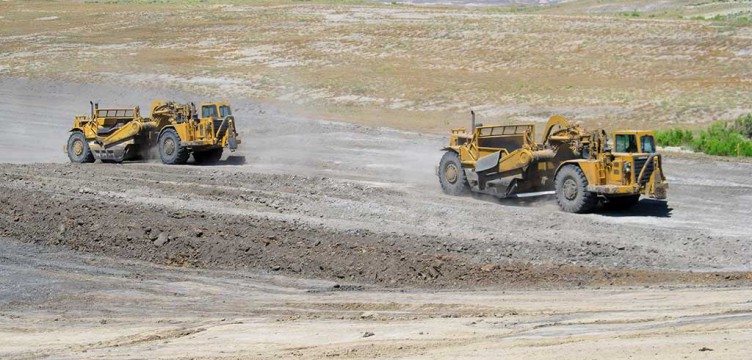Wyoming is the nation’s leader in bentonite production with over 4 million tons produced each year in three major economic geologic areas in the state:
- The Clay Spur area around Upton and Newcastle;
- The Colony Area in the northeast corner of Wyoming;
- Along the east and west flanks of the Big Horn Range.
Wyoming has 70 percent of the world’s known supply of bentonite, which is also produced in Greece, Japan, Italy, Brazil, Romania, Germany, Mexico, Argentina, Spain, India, Hungary, Poland, Canada, Turkey, and Cyprus. However, Wyoming’s bentonite has unique characteristics that are rarely found anywhere else. It can swell up to 16 times its original size and absorbs up to 10 times its own weight in water.
These characteristics are mostly due to the presence of sodium instead of calcium, which is more commonly found in Bentonite. Geologists believe that the sodium in Wyoming’s bentonite was created by high concentrations of sodium ions in the seawater where volcanic ash settled.
Concise Guide to Wyoming Bentonite
2018 Wyoming Bentonite Production and Employment
Origin
Wyoming bentonite is the result of chemical changes in ancient volcanic ash, which originated in western Wyoming and Idaho about 120 million years ago during the late Cretaceous period.
Winds blew the ash into a shallow sea that covered most of what is now Montana and Wyoming. Present day exposures of the ash deposits are mined to an average depth of 25 feet in the Big Horn Basin, the Powder River Basin, and along the edges of the Black Hills.
By-The-Numbers
- #1 Wyoming is the nation’s number 1 leader in bentonite production.
- 5.2 million Tons of bentonite produced in Wyoming in 2019.
- 771 The number of people bentonite mining employed in 2019.
- 16x Wyoming Bentonite can swell up to 16 times its original size.
- 70% Bentonite deposits in Wyoming make up to 70 percent of the world’s known supply.
Mining & Processing
Bentonite is surface mined through a process called back-casting where reclamation is performed by filling the mining pits with soils from subsequent pits while the mine is in production. Typically the topsoil layer is about 30 inches deep, which is removed using heavy equipment.
Once the bentonite is removed, it is cleaned and then tested to confirm the grade. It is then dried in the field before being taken to the plant for processing and stockpiled on-site or transferred to a processing facility.
The Clay of a Thousand Uses

Bentonite has been called “Miracle Mud” and the “Clay of a Thousand Uses.” Some of these include absorbents, animal feed, drilling fluids, foundry, iron ore pelletizing, and sealants. Wyoming bentonite is particularly in demand for pet litter because of it’s ability to absorb many times its volume in water and control odors. Among other uses, bentonite is found in crayons, medication, and cosmetic such as shampoos, lotions, face creams, and lipstick.
Originally, Wyoming bentonite was used by local Indians as a bleaching clay and a washing agent. Pioneers used it as a substitute for axle grease to cure inflamed horses hoofs and to waterproof roofs.
Today bentonite is used in a variety of industries including the metal casting industry where it is used as a bonding material for molding processes. When mixed with certain types of molding sands, a bond is formed that can withstand very high temperatures.
Bentonite is also used in the ceramic and building industries where it is mixed with clay and sand to form adhesive which is effective in sealing against water.

